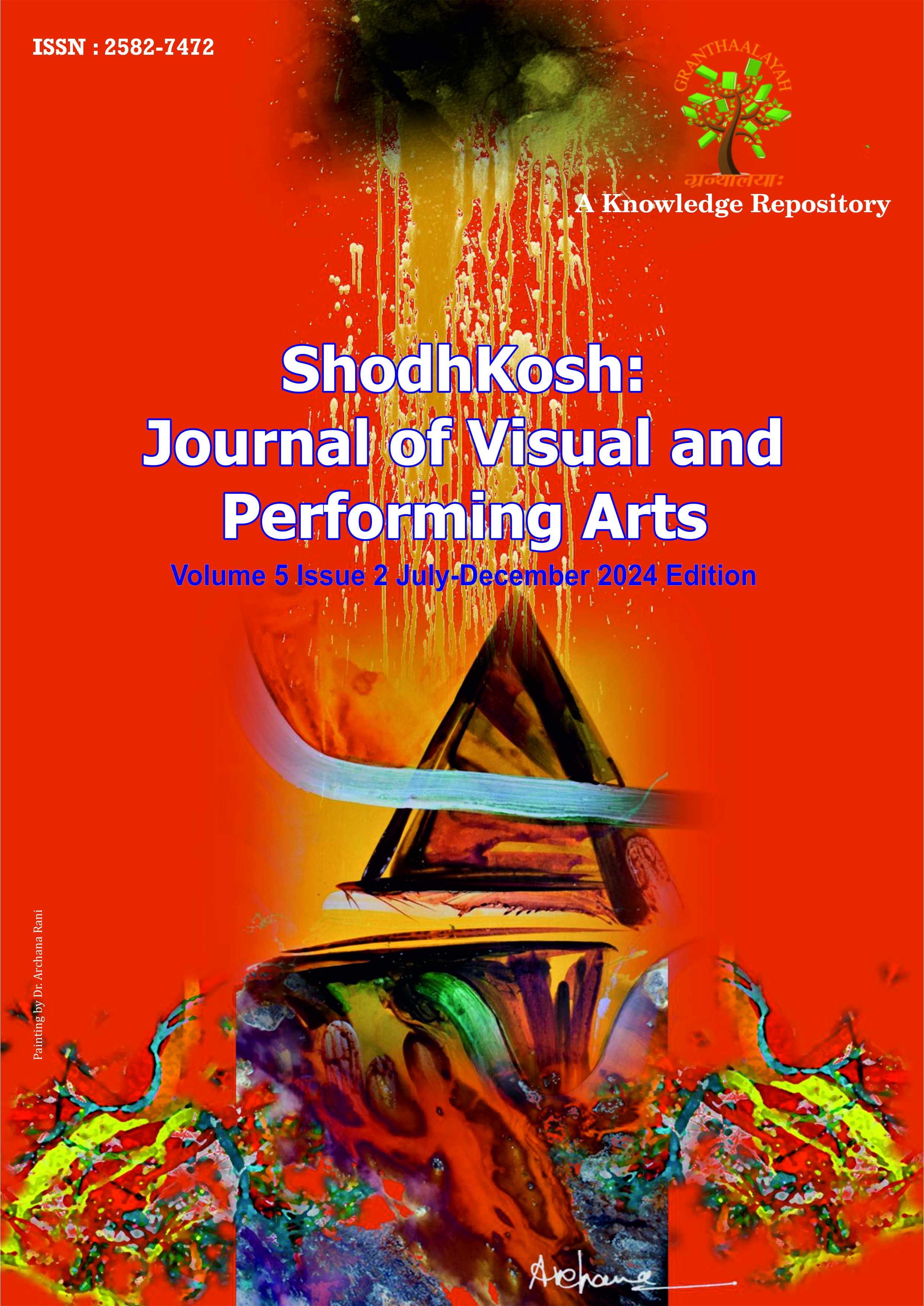THE EARLY MEDIEVAL TEMPLE ARCHITECTURE IN TEZPUR: AN ANALYTICAL STUDY
DOI:
https://doi.org/10.29121/shodhkosh.v5.i2.2024.792Keywords:
Tezpur, Temple, Architectural RemainsAbstract [English]
The Sonitpur district of Assam is steeped in a rich tapestry of mythology and historical significance, making it a captivating region to explore. According to the Kalika Purana, it was once under the rule of Bana, a legendary figure whose name resonates in the “Shanti Parva” of the Mahabharata. Bana, an ardent devotee of Lord Shiva, is renowned for leaving behind a legacy of numerous Shiva temples in Sonitpur.
Traditional beliefs have preserved the ancient name Sonitpur for Tezpur, as documented in the Puranas, which underscores the deep-rooted historical continuity in the area. Tezpur is adorned with a multitude of temples and shrines, their ruins scattered throughout the region. These remnants serve as captivating archaeological subjects, offering valuable insights into the region’s cultural and historical heritage.
This study takes an analytical approach to delve into some of the architectural remains of Tezpur under Sonitpur district of Assam. By examining the architectural marvels of this region, we can unlock the enduring legacy of its past and gain a deeper understanding of its cultural and historical significance.
References
Agrawala, P. K. (1968). Gupta Temple Architecture, Prithvi Prakashan, Varanasi.
Archaeological Survey of India. (1906-07). Annual Report of the Archaeological Survey of India (A.R.A.S.I).
Archaeological Survey of India. (1922-23). Annual Report of the Archaeological Survey of India (A.R.A.S.I).
Archaeological Survey of India. (1924-25). Annual Report of the Archaeological Survey of India (A.R.A.S.I).
Archaeological Survey of India. (1925-26). Annual Report of the Archaeological Survey of India (A.R.A.S.I).
Archaeological Survey of India. (1928-29). Annual Report of the Archaeological Survey of India (A.R.A.S.I).
Barpujari, H. K. (1990). The Comprehensive History of Assam, Vol. I. Publication Board, Assam.
Barua, K. L. (1988). Early History of Kamarupa (3rd Ed.). Lawyers Book Stall. Guwahati, Assam
Baruah, H. P. (2004). Tezpurar Sthapatya Bhaskaryya: Eti Adhyan. [Unpublished M. Phil. Dissertation, Gauhati University]. Assam.
Choudhury, P.C. (1966). The History of Civilisation of the People of Assam to the Twelfth Century A.D. (2nd Ed.). Department of Historical and Antiquarian Studies in Assam, Gauhati.
Choudhury, R. D. (1985). Archaeology of the Brahmaputra Valley of Assam, Agam Kala Prakashan, Delhi.
Neog, M. (1991). Pavitra Asam. (3rd Ed.). Lawyer’s Book Stall. Guwahati, Assam
Phookan, N. (2013). Silpakalar Upaladhi aru Ananda. Anwesha, Guwahati.
Sarma, P. C. (1988). Architecture of Assam. Agam Kala Prakashan, Delhi.
Sarma, P.C. (1975). Antiquity of the Ruined Temple at Da-Parvatiya. Bulletin of the Assam State Museum (B.A.S.M.). No.I. 36-40.
Published
How to Cite
Issue
Section
License
Copyright (c) 2024 Dr. Hari Prasad Baruah, Kalpana Baruah

This work is licensed under a Creative Commons Attribution 4.0 International License.
With the licence CC-BY, authors retain the copyright, allowing anyone to download, reuse, re-print, modify, distribute, and/or copy their contribution. The work must be properly attributed to its author.
It is not necessary to ask for further permission from the author or journal board.
This journal provides immediate open access to its content on the principle that making research freely available to the public supports a greater global exchange of knowledge.




























